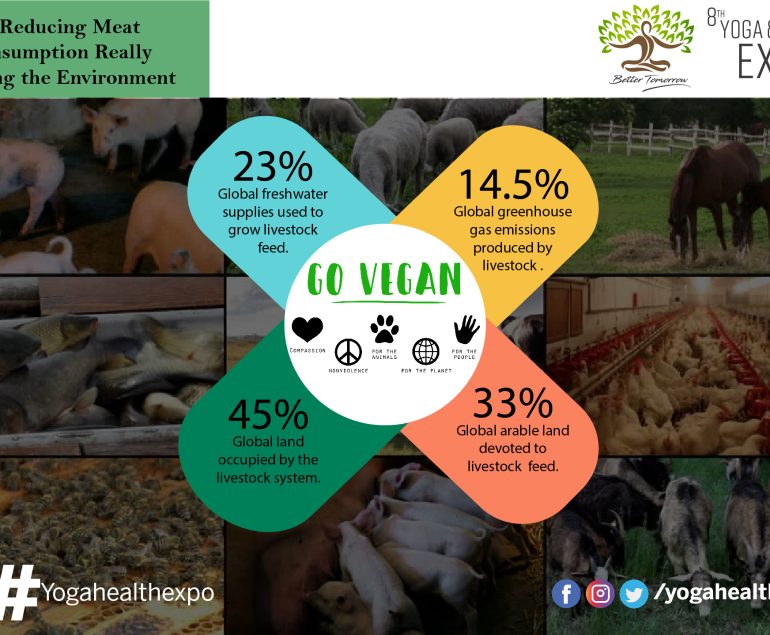A nomadic vegan diet can become a challenge to maintain. Whether you’re traveling around the world and tasting their local cuisine or just enjoy international fare, you need to get the most out of every bite. It is a challenge enough to travel on a low and no meat diet, so a full-on plant-based diet should be more problematic, right?
Fortunately, the answer is no.
If you prepare a well-planned vegan diet, you can get not only more nutrition but a full stomach too. If you’re looking to taste the different flavors and aromas of international vegan cuisine, you need to know how to make the most out of it. Try these 7 ways to make the most of your nomadic vegan diet.
1. Ensure You Have Enough Vitamin B12
Vitamin B12 deficiency is one of the biggest nutritional hurdles to becoming vegan. B12, known as cyanocobalamin, is a vitamin that helps blood and nerve cells be healthy. It also helps lower the risk of heart disease and potential complications during pregnancy and childbirth.
With that said, Vitamin B12 is only possible to absorb naturally from meat and animal products. In some reports, vegans can also get it from spirulina, dried nori, seaweed, yeast extracts like Marmite, barley grass, and more. Yet, the same reports note that there is not enough to meet the daily intake allowance for the vitamin.
An easy solution is to buy Vitamin B12 supplements, taking a lower daily dose or a higher weekly dose. You can also look for B12 fortified foods and incorporate them into your diet. These include fortified cereals, grains, Marmite, and even fortified tofu.
2. Be Open To More Types of Vegan Cuisine
When it comes to enjoying more flavors with your vegan cuisine, the devil is in the details. You would want to try and be experimental with the cuisines that you try. Try to be open to different kinds of dishes from various countries in the world.
Among the most accessible cuisines for those with nomadic vegan diets include Indian, Asian, and Italian food. If you’re tired of the same stir fry, you can try some dishes from these cuisines. South Indian cuisine, for example, offers delicious flavors that encompass several taste notes and aromas.
Be diligent in finding vegan recipes online. Let go of your fears that you’ll get it wrong the first time. The idea is to keep looking for new recipes that can diversify what you eat.
3. Incorporate Raw Foods Into Your Diet
One of the most vital benefits of the vegan diet is the ability to get the most out of the food that you eat. A raw diet adds food that is both uncooked and unprocessed. Not everyone is willing to go 100% raw in their diet but there are many diet benefits if you include it in your daily intake.
Adding raw food into your plant-based diet can maximize the number of vitamins and nutrients in every meal. Cooked food loses more than half its nutritional value when cooked, so adding raw food to your meals can boost what you can absorb.
Raw fruits, vegetables, nuts, nut milk, and more are also easier on the digestive system. You can get more fiber and protein while keeping it easy for your stomach.
4. Do Your Research When Traveling
Nomadic vegan diets rely on local cuisine options when traveling to different countries. Depending on where you are traveling, it might be easier or harder to get vegan-friendly dishes. You would want to do a few preparations before you decide to visit a country for its vegan food.
In many countries, the growing vegan economy makes it easier to find shops and restaurants that cater to plant-based diets. Tourist-friendly countries like Japan, Taiwan, and Israel offer different types of local vegan cuisine.
Beyond some big restaurants and hotels, you would want to do some intensive research to find mom-and-pop shops.
As we noted before, India, due to its religious and economic restrictions, offers a big variety of vegan options. Italy also has a surprisingly well-developed vegan scene that offers favorites like pasta and pizza without cheese and dairy.
Before you visit a country, find out the vegan options that you can find there and where they’re available. A little extra time finding the best places to eat plant-based cuisine should save you a ton of time and grief.
5. Eat What You Want, When You Want
One advantage that vegans have is the ability to let go of the dieting mentality. Gone will be the days when you have to control how much you eat as plants are generally healthy and good for your body. When it comes to whole foods, there’s no reason for you to keep track of your calories at all.
With a vegan diet plan, there’s no limit to the salad, rice, potatoes, plant-based desserts, and fruits that you can eat. Eating an entire feast of vegan food should still be less than the fat and calories that you will get from a fast food meal set. Eat as much as you want, when you want!
6. Be Aware Of Your Dietary Restrictions
Enjoying a nomadic vegan diet means being informed and aware of your own body. Before you even start savoring the different flavors and aromas from plant-based cuisines all over the world, do your research.
Be scientific about your approach and make sure you are free to eat various ingredients from all over the world. Test for allergies if you haven’t done so yet.
A balanced vegan diet is most effective if you don’t have limitations in what you can eat, including nuts, soy, grains, and other legumes.
If you plan on shifting to a plant-based diet, consult with your doctor. Some people with specific conditions, especially nut and soy allergies, will have trouble shifting to such a diet. A vegan diet is healthy but it may not fit your body’s dietary requirements.
7. Load On Carbs
Part of the nomadic vegan diet is to enjoy dishes that can make you full. You don’t want to feel hungry or sluggish all the time, it’s best to load up on carbs. While this can go against most recommendations, plant-based diets make carbohydrates easy to process.
Staple foods like rice, potatoes, and grains will contain starches that will give you an immediate boost in energy. Unless you’re diabetic, loading up on a high-carb vegan diet from several cuisines should help you power through your day.
Don’t hesitate to eat dishes that use basic flour. While some will recommend against it due to some flours being bleached, flour is a crucial component of many dishes. If you’re in a country where you have little access to specialized flour varieties, enjoy the baked goods without guilt. Just make sure they don’t have animal products!
There are more ways you can do to make the most of your nomadic vegan diet. The best way to make the right decision each time is to do your research. Study what you’re eating and where it comes from. We’re sure you’ll have a good time figuring out what your palate would love to try.
Arleen Atienza
Tech. Dev. Business.


